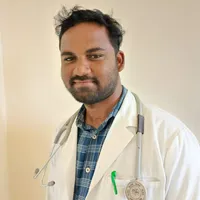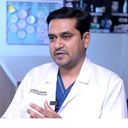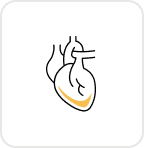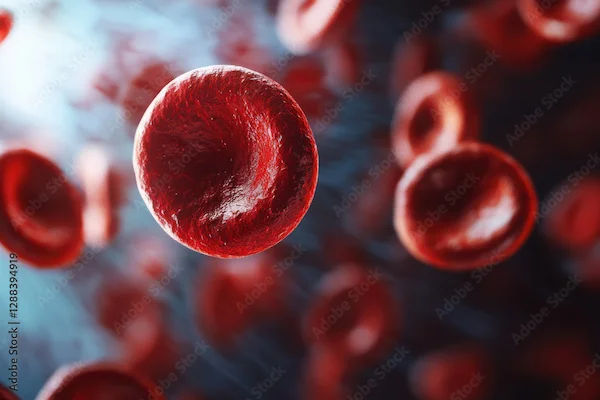Guide to Cardiac Sciences Cardiac Surgery Ctvs
Explore cardiac sciences and CTVS surgery in India. Learn when surgery is needed, types of procedures, preparation, recovery, and how to choose the right heart team for optimal outcome


Introduction
Cardiac sciences bring together the expertise you need when the heart or blood vessels need special attention, from early diagnosis to lifesaving surgery and recovery. If you have been told you may need cardiac surgery, or you are curious about CTVS (Cardiothoracic and Vascular Surgery), this guide explains what happens, why it happens, and how you can prepare with confidence. You will learn when cardiac surgery is recommended, the most common procedures, including bypass and valve surgery, newer minimally invasive and transcatheter options, what to expect in the operating theatre, and how recovery and cardiac rehabilitation work. Practical tips on choosing a CTVS team, understanding risks and outcomes, and planning life after surgery are also included. Whether you are a patient or caregiver, this guide offers clear, compassionate information based on leading cardiac sciences resources.
Cardiac Sciences and CTVS: What Do They Mean?
Cardiac sciences is an umbrella term for the coordinated care of heart and vascular conditions. It combines cardiology, cardiac surgery, thoracic surgery, and vascular surgery. CTVS specifically refers to surgical care of the heart, lungs, chest, and vascular system. In many hospitals, the CTVS department teams up with cardiology, cardiac anaesthesia, perfusionists, intensivists, nurses, and rehab specialists to deliver continuous, team-based care.
Most decisions today are made by a heart team. For example, if you have severe aortic stenosis, the team may compare surgical aortic valve replacement (SAVR) with a transcatheter option (TAVR), weighing age, anatomy, and overall health. If you have multivessel coronary disease, they may compare bypass surgery (CABG) with stenting, based on angiography, diabetes status, and long-term outcomes.
This integrated approach improves safety and results because experts review your case together, standardise protocols,
and track outcomes. Even when a transcatheter approach seems appealing, the best choice may hinge on factors such as calcification patterns or frailty, which comprehensive CTVS teams are trained to assess.
When Is Cardiac Surgery Needed?
Surgery is typically recommended when structural heart or vessel problems cannot be reliably managed by medication
or catheter-based interventions. Common pathways include:
- Coronary artery disease causing angina, breathlessness, or heart attack, which may lead to CABG.
- Valve disease such as aortic stenosis or mitral regurgitation, progressing to repair or replacement when symptoms or
heart function worsen. - Aortic aneurysms or dissections, requiring open or endovascular repair to prevent rupture.
- Congenital heart defects in infants, children, or adults, such as septal defects or complex anomalies.
- Arrhythmias like atrial fibrillation that persist despite medication or ablation, sometimes treated with a MAZE
procedure during other surgery.
Decisions are guided by tests including ECG, echocardiogram, coronary angiogram, CT angiography, and sometimes
cardiac MRI. The heart team considers symptoms, anatomy, surgical risk, and patient goals.
Seek urgent help if you experience chest pain that is heavy or spreads to the arm or jaw, sudden breathlessness, fainting,
or new weakness. For non-urgent persistent symptoms such as exertional chest discomfort, palpitations, or
breathlessness lasting more than two weeks, consider an online consultation to triage next steps.
Consult Top Cardiothoracic & Vascular Surgeons
Types of Cardiac Surgery and CTVS Procedures
There are several key procedures performed by CTVS teams:
- Coronary artery bypass grafting (CABG): Surgeons create bypasses around blocked arteries using grafts, often the \
internal mammary artery or saphenous vein. CABG can be on-pump or off-pump. Recovery varies, with light activity
resuming within weeks and full recovery in 6–12 weeks. - Valve repair or replacement: Mitral repair is preferred when feasible, preserving native valve function. Aortic stenosis
may be treated with SAVR or TAVR, depending on age, anatomy, and risk. Mechanical valves last longer but require
anticoagulation, while tissue valves avoid long-term blood thinners but may wear out sooner. - Aortic and vascular procedures: Ascending aorta aneurysms often need open repair, while descending or abdominal
aneurysms may be treated endovascularly (TEVAR/EVAR) through small groin incisions. - Rhythm surgery and devices: Persistent atrial fibrillation may be treated with a surgical MAZE. Devices include
pacemakers, ICDs, and CRT for advanced heart failure. - Paediatric and congenital surgery: CTVS teams repair defects such as septal defects and Tetralogy of Fallot, with
significantly improved outcomes at specialised centres.
Minimally invasive surgery is not always better; anatomical suitability and long-term goals determine the best option.
Robotic and less invasive procedures reduce pain and scars but are not suitable for all patients.
Preparing for Cardiac Surgery
Preparation can significantly improve recovery:
- Pre-op evaluation: Blood tests, chest X-ray, ECG, echocardiogram, angiography or CT scans, and dental evaluation are
required. Pulmonary function tests may be needed if lung disease is present. - Optimising health: Stop smoking, control blood sugar, blood pressure, and cholesterol. Supervised prehab such as gentle
aerobic exercise and breathing exercises can help. Good nutrition speeds healing. - Medications: Follow guidance on blood thinners and other medicines. Do not change your medication without advice.
- Plan for home: Arrange a caregiver, clear walking paths, prepare simple meals, and set up a comfortable sleeping space.
Discuss expected time off work and driving restrictions.
Practice prehab routines such as using an incentive spirometer, walking short distances, and sternal precautions before
surgery to reduce anxiety and improve recovery.
Get Your Health Assessment Done
Inside the Operating Room: What to Expect?
On surgery day, anaesthesia and nursing teams confirm the plan and place monitors and lines. Most operations use a
heart–lung machine to circulate and oxygenate blood while the heart is stopped. Brain and kidney protection strategies
are carefully applied.
Minimally invasive approaches may use small chest incisions or robotic instruments, while complex cases may require
full sternotomy. Transcatheter therapies such as TAVR may be performed via the femoral artery in a hybrid operating
room, often under conscious sedation.
Families can expect several hours from check-in to completion. Patients go to ICU post-surgery for monitoring and
gradual removal of tubes and drains. Discuss strategies with the surgeon for minimising blood transfusions to enhance
recovery.
Risks, Recovery, and Rehabilitation
Every surgery carries risks such as bleeding, infection, stroke, kidney injury, or arrhythmias. Risk is estimated using
tools like STS or EuroSCORE II. The team mitigates risks through pre-op optimisation, precise technique, and early
mobilisation.
Recovery pathway:
- ICU and step-down units focus on pain control, breathing exercises, and gradual mobilisation.
- Home care involves protecting the sternum, keeping incisions clean, and reporting issues promptly.
- Cardiac rehabilitation provides monitored exercise, diet and medication education, stress management, and a phased
return to work and driving.
Red flags after discharge include worsening shortness of breath, chest pain, palpitations, fainting, fever, wound issues,
leg swelling, or sudden weakness. For non-emergency concerns, book a check-in or online follow-up.
Choosing Your CTVS Team and Centre
Outcomes correlate with surgeon and centre experience. High-volume centres maintain standardised protocols, 24/7
support, and specialised ICUs.
Look for:
- Transparent outcomes benchmarked nationally.
- Accreditation and specialised programs including valve, aortic, congenital, and transplant services.
- Team depth with anaesthesiologists, perfusionists, hybrid ORs, and rehab support.
Ask about annual procedure numbers, outcomes, suitability for minimally invasive options, risk estimates, pain
management, hospital stay, and rehabilitation plans. Discuss costs, insurance, and rehab coverage. Surgeon–patient
communication is key to satisfaction.
The Future of Cardiac Sciences
Rapid advances include:
- Transcatheter therapies: TAVR, mitral and tricuspid interventions for patients unfit for surgery.
- Robotics and minimally invasive surgery: Smaller incisions, faster recovery, greater precision.
- Hybrid operating rooms: Combining surgery and catheter-based procedures.
- AI and advanced imaging: Risk prediction, 3D printing, and personalised device sizing.
- Personalised care: Genomics, frailty assessment, and tailored rehabilitation plans.
Shared decision-making remains essential as options expand, ensuring technology serves the patient.
Conclusion
Cardiac sciences and CTVS guide patients through some of medicine’s most critical decisions. A coordinated heart
team ensures evaluation, surgery, and recovery are personalised and evidence-based. Diagnostic tests clarify the
problem, shared decision-making aligns the plan, and standardised protocols protect patients during and after surgery.
Preparation through risk factor control, understanding the procedure, and planning for rehab improves outcomes and recovery.
For non-emergency queries or to coordinate testing, consult a doctor online with Apollo 24|7. Lab tests before surgery such as HbA1c or vitamin D can be conveniently collected at home. Embrace cardiac rehabilitation, adopt heart-healthy habits, and attend follow-ups to ensure long-term heart health.
Consult Top Cardiothoracic & Vascular Surgeons
Consult Top Cardiothoracic & Vascular Surgeons

Dr. Vinay Praveen
Cardiothoracic and Vascular Surgeon
5 Years • MBBS, DrNB [CTVS]
Hyderabad
Apollo Hospitals D R D O kanchanbagh, Hyderabad

Dr Balaraman P
Cardiothoracic and Vascular Surgeon
15 Years • M.Ch (CTVS),DNB(CTVS),FRCS(Eng)
Chennai
Apollo Speciality Hospitals OMR, Chennai
Dr Sumanth R
General Physician
2 Years • MBBS
Bengaluru
PRESTIGE SHANTHINIKETAN - SOCIETY CLINIC, Bengaluru
Dr. Mahendranath Subramani Prasad
Cardiologist
16 Years • MBBS,MS ,DNB, M.Ch. Cardiovascular and Thoracic Surgery(Cardiology)
Bengaluru
Apollo Clinic, Sarjapur Road, Bengaluru

Dr. Anand Ravi
General Physician
2 Years • MBBS
Bengaluru
PRESTIGE SHANTHINIKETAN - SOCIETY CLINIC, Bengaluru
Consult Top Cardiothoracic & Vascular Surgeons

Dr. Vinay Praveen
Cardiothoracic and Vascular Surgeon
5 Years • MBBS, DrNB [CTVS]
Hyderabad
Apollo Hospitals D R D O kanchanbagh, Hyderabad

Dr Balaraman P
Cardiothoracic and Vascular Surgeon
15 Years • M.Ch (CTVS),DNB(CTVS),FRCS(Eng)
Chennai
Apollo Speciality Hospitals OMR, Chennai
Dr Sumanth R
General Physician
2 Years • MBBS
Bengaluru
PRESTIGE SHANTHINIKETAN - SOCIETY CLINIC, Bengaluru
Dr. Mahendranath Subramani Prasad
Cardiologist
16 Years • MBBS,MS ,DNB, M.Ch. Cardiovascular and Thoracic Surgery(Cardiology)
Bengaluru
Apollo Clinic, Sarjapur Road, Bengaluru

Dr. Anand Ravi
General Physician
2 Years • MBBS
Bengaluru
PRESTIGE SHANTHINIKETAN - SOCIETY CLINIC, Bengaluru
More articles from General Medical Consultation
Frequently Asked Questions
Q1. What is CTVS surgery?
CTVS stands for Cardiothoracic and Vascular Surgery. It includes cardiac surgery on the heart and valves, thoracic surgery on the lungs and chest, and vascular surgery on blood vessels.
Q2. How long is cardiac surgery recovery time?
Recovery varies by procedure. After open-heart surgery, many people resume driving in 4–6 weeks and full activity in 6–12 weeks. Minimally invasive or transcatheter procedures often have shorter recoveries. Cardiac rehabilitation personalises the timeline.
Q3. CABG vs stent—how is the choice made?
The heart team considers artery anatomy, number of blockages, diabetes status, symptoms, and long-term goals. CABG may provide better long-term results in multivessel disease, while stents are less invasive for specific patterns.
Q4. What are common open heart surgery complications?
Potential issues include bleeding, infection, stroke, kidney injury, irregular heart rhythms, and lung problems. Risk is estimated using tools like STS or EuroSCORE II. Teams reduce risk through optimisation, precise technique, and early mobilisation.
Q5. How do I choose a heart surgeon and centre?
Choose high-volume centres with transparent outcomes, specialised programmes, and comprehensive cardiac sciences services. Ask about your surgeon’s experience, estimated risk, recovery plan, and suitability for minimally invasive options.







